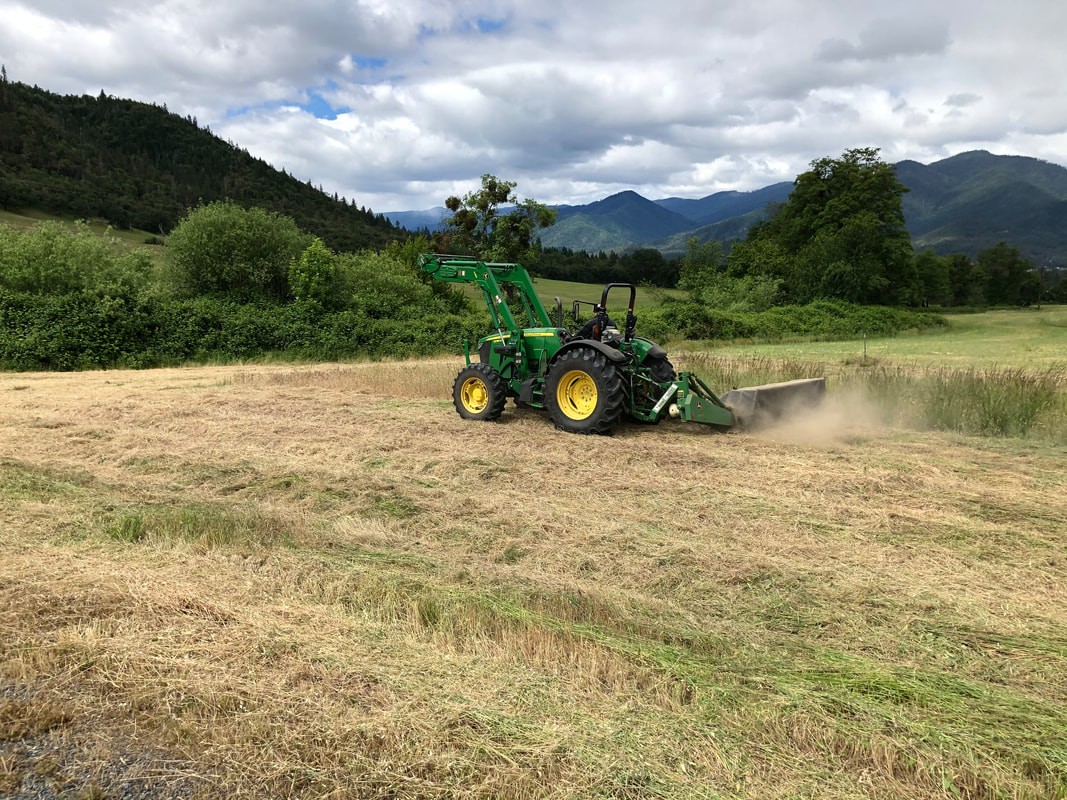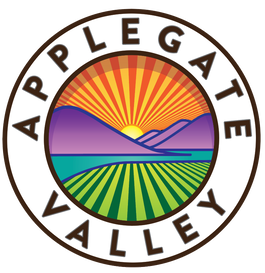|
In the northwest corner of our farm is a 1-acre parcel that has largely been unused since we bought our farm in 2014. The previous owners had an agreement with the local organic dairy to grow winter vetch for their cows, but we've just mowed it a couple of times per year and then left it alone. It is bordered by neighbors to the west, the road to the north, our driveway to the east, and Slagle Creek to the south. In October of last year we hosted a visit by the OSU Extension Land Steward class. Debbie and I are both graduates of the program and are always eager to give back. Gordon Jones, Assistant Professor in the Department of Agriculture was part of the visit. One of his specialties is pasture management, and specifically, grasses. He talked to the class about soil health and the best grasses for our area's fields. I pulled him aside and asked him about the possibility of growing hay for our flock of 9 sheep. We have been purchasing hay from neighbors and from our local farm store. According to Gordon we needed to mow and then seed just before the winter rains. In November we purchased a 100# bag of pasture seed mix and spread about half of it on the 1-acre, freshly mowed field. We didn't get our usual amount of rain this past winter in southern Oregon and since we did not plan on irrigating I wasn't sure if we'd actually make any hay at all. And if it the grass did grow, we still had to find someone to cut, rake, and bale it. This is a very rural area in which we live so it didn't take too many phone calls before we found that our neighbor Jack had the equipment. Jack came up in April to have a first look. "Doesn't look like much yet, but let's give it until the end of May then re-check". I called him a month later and he was ready to start. "I've driven by and see that you're as ready as you're going to be". Almost finished with the mowing Timing is critical for making hay. There needs to be a one week window in between rains. We didn't want the cut grass to get wet before it was baled into hay or there would be a high likelihood of mold. The sheep wouldn't like it and it wouldn't be good for them. Raking into windrows Word from Jack before baling was that the grass was not uniform and that there were lots of weeds. We knew this going in. Observable in the photo above are areas of dry brown grass and lush green grass. The weeds weren't a concern because the sheep were used to eating around what they didn't like. We weren't sure what problems the texture differences might cause. We pressed ahead. View of the field after baling The baling went reasonably well. The greener grasses made tighter bales; the brown grasses were a bit loose and harder to handle. Fortunately we got help from Kevin, our young and strong vineyard worker, who helped load the hay onto the trailer for the short drive to the barn. It took two trips to get it all in. 35 bales in all and the sheep seem to like it! Not bad for a first try. Before next year we plan on smoothing the field and getting rid of as many of the noxious weeds as possible. And maybe we'll have more normal rains this year. All the hay stacked into the barn before the rains came back
Comments are closed.
|
AuthorGreg is a retired engineer with a passion for wine and for caring for the land. Archives
July 2020
|
Our tasting room is open Fridays and Saturdays, 12:00 p.m. to 5:00 p.m., and by appointment other days and special events. Please use the MAKE APPOINTMENT button below to book online.
Please note, our permit does not allow minors on the premises.
755 Slagle Creek Road, Grants Pass, OR 97527
greg@schultzwines.com; 541-414-8448
debbie@schultzwines.com; 541-414-8444
Professional Photography by David Gibb Photography and Steven Addington
greg@schultzwines.com; 541-414-8448
debbie@schultzwines.com; 541-414-8444
Professional Photography by David Gibb Photography and Steven Addington








